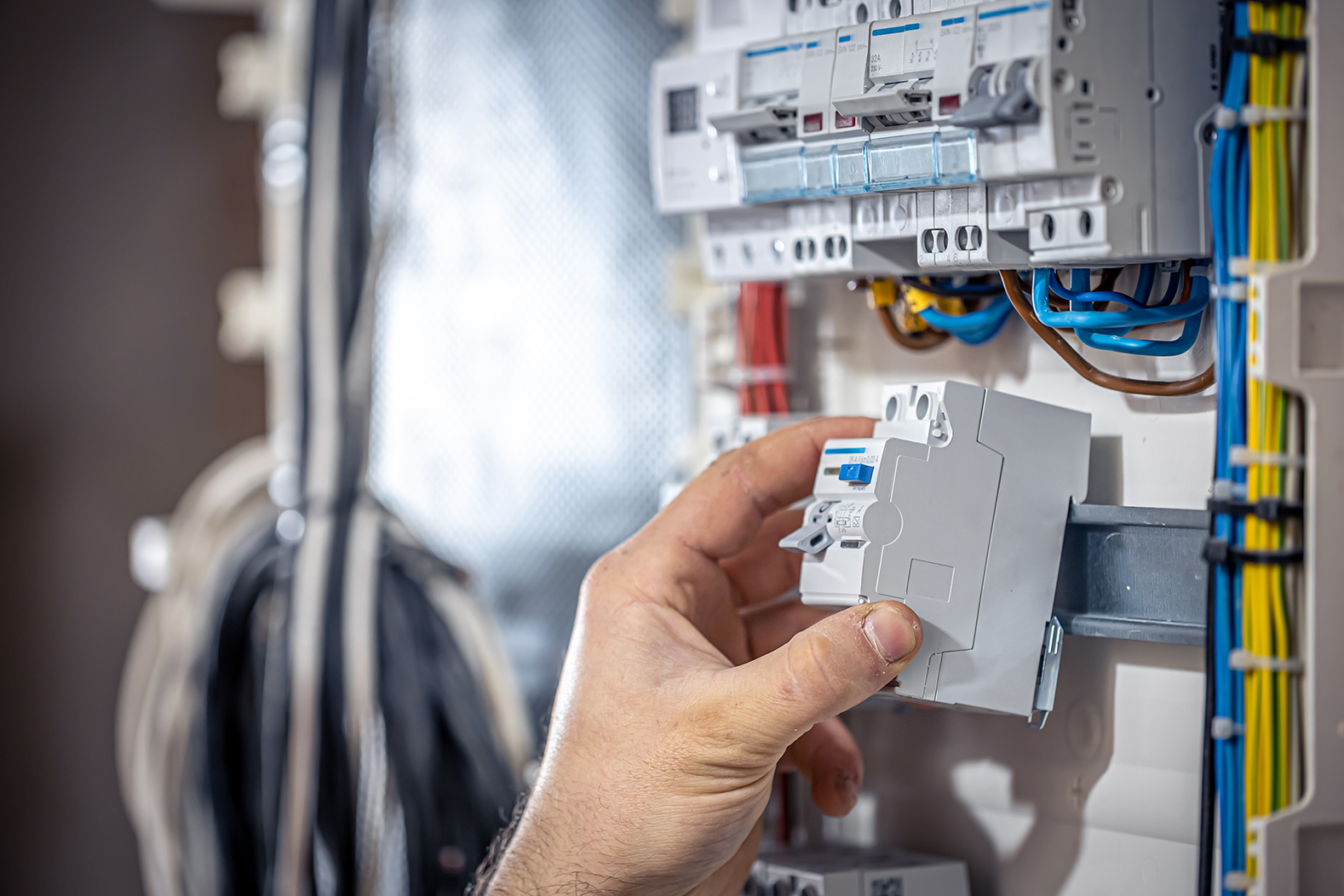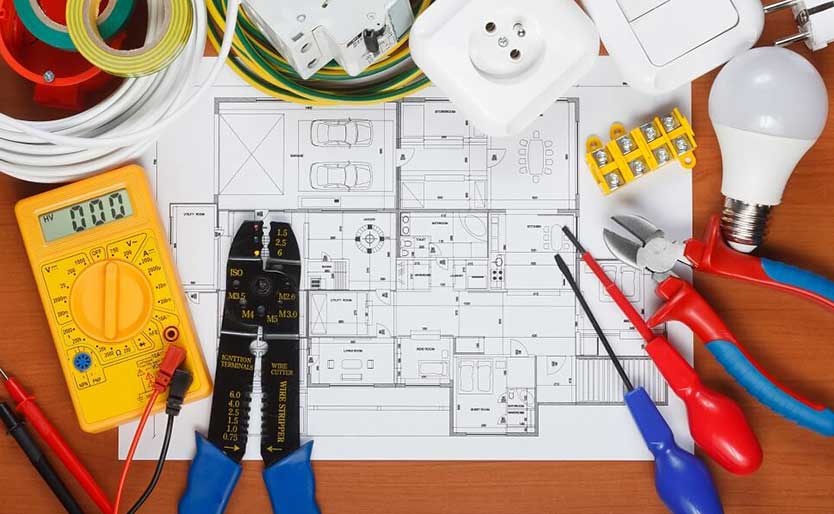Common Electric Issues Every Homeowner Should Learn about
Property owners usually come across various electric issues that can impact safety and security and performance. Concerns like flickering lights and tripped breaker are a lot more common than several realize. These scenarios can indicate much deeper electric issues that warrant attention. Recognizing the dangers and signs related to out-of-date wiring and dead electrical outlets is necessary. What actions can be required to protect against these problems? Checking out these usual electric issues can expose vital insights for preserving a safe home atmosphere.

Flickering Lights: Causes and Solutions
Why do some homeowners experience flickering lights? Flickering lights can be a typical nuisance, typically showing underlying electrical concerns. One primary cause is loosened or damaged links within light fixtures or electrical wiring, which can lead to periodic power supply. In addition, making use of high-wattage devices on the exact same circuit may cause voltage changes, leading to lowering or flickering. One more prospective problem is an overloaded circuit, where a lot of tools attract power at the same time, straining the electric system. Obsolete or abject circuitry can add to inconsistent electrical flow. In some situations, flickering lights may indicate an issue with the home's electrical panel or service line. House owners must attend to flickering lights without delay to avoid prospective dangers. Solutions may consist of tightening links, redistributing appliance tons, or getting in touch with a certified electrical contractor for a detailed analysis. Recognizing the origin can assist ensure a stable and secure electric system in the home.
Tripped Circuit Breakers: What You Required to Know
Have property owners ever questioned what triggers their breaker to trip suddenly? This typical concern commonly develops from an overload of electrical circuits, where a lot of devices attract power simultaneously. In such cases, the breaker works as a safety mechanism, disrupting the flow of electricity to stop overheating and possible dangers. Another regular reason is a short circuit, which occurs when a real-time cable calls a neutral cable, creating a surge of power that trips the breaker. Ground mistakes can additionally lead to stumbled breakers; these take place when a live cord touches the ground or a grounded surface area, presenting major safety and security dangers. Homeowners need to regularly examine their usage of high-wattage devices to prevent straining circuits. In addition, comprehending the feature of circuit breakers can assist them respond suitably during a trip, ensuring their home continues to be risk-free and well-maintained.
Obsolete Electrical Wiring: Indicators and Threats
Outdated wiring can position considerable risks to homeowners, frequently going unnoticed up until problems occur. Houses developed prior to the 1980s might still have aluminum wiring or knob-and-tube systems, which are no more thought about secure. Indicators of outdated wiring consist of flickering lights, often stumbled breaker, or melting scents near electrical outlets. These signs might suggest that the electric system is overloaded or deteriorating.Additionally, property owners could discover swelter marks around switches or outlets, which can indicate overheating. The danger of electrical fires substantially raises with obsolete circuitry, as these systems were not designed to take care of contemporary electrical loads. Property owners are encouraged to have their wiring evaluated frequently, particularly when remodeling or including brand-new home appliances. By recognizing these signs early, they can avoid dangerous situations and keep a much safer living environment. Upgrading to current electric criteria is a positive action in keeping home safety and effectiveness.
Frequently Blown Fuses: Troubleshooting Tips
Regular blown fuses can show underlying electric issues that might stem from obsolete circuitry or overloaded circuits. House owners experiencing this problem needs to first determine the home appliances linked to the influenced circuit. It is suggested to avoid using several high-wattage gadgets simultaneously, as this can bring about circuit overload. If the issue persists, inspecting the fuse box for indicators of wear or damage is vital; a malfunctioning circuit box may call for replacement.Additionally, checking for loose connections within the circuit can aid avoid future events. Home owners must also confirm that the fuses being utilized are of the proper amperage, as using an inaccurate fuse can aggravate the trouble. If these troubleshooting tips do not resolve the concern, speaking with a qualified electrical contractor is recommended to review the electric system further. Addressing these worries promptly can help mitigate dangers and ensure the security of the home's electrical framework.
Dead Outlets: Common Causes and Fixes
When a house owner experiences a dead electrical outlet, it can frequently provide aggravation and complication. Numerous typical reasons might bring about this problem. One frequent wrongdoer is a stumbled circuit breaker, which can be easily reset. If her comment is here any kind of breakers are in the off setting, home owners should inspect their electrical panel to examine. Another opportunity is a damaged electrical outlet itself, which might call for substitute. Additionally, loosened electrical wiring connections within the outlet can disrupt power flow, making inspection essential.Sometimes, the trouble might stem from an overloaded circuit, specifically when several gadgets are connected. In such instances, redistributing the electric load can deal with the issue. Property owners must additionally take my site into consideration the age of their electrical wiring; older systems might need updates to fulfill contemporary electrical needs. If these actions do not correct the circumstance, consulting a licensed electrician is a good idea to assure security and proper diagnosis.
Electric Shocks: When to Be Concerned
Exactly how can homeowners establish whether an electrical shock warrants worry? Home owners ought to first analyze the seriousness and context of the shock. A light static shock, commonly felt when touching metal things, is usually safe and usual. However, if the shock happens while engaging with a plugged-in home appliance or electrical outlet, it might suggest a much more severe issue.The area and frequency of the shocks are necessary. Repeated shocks from the very same resource, specifically in wet locations like washrooms or kitchens, can signify damaged circuitry or poor grounding. House owners need to additionally take into consideration the experience of the shock; a jolt that triggers pain or contraction is much more disconcerting than a mere tingle.If there's any type of unpredictability, it is suggested to consult a certified electrical contractor. Disregarding prospective electric threats can bring about severe security threats, including fire or extreme injury.
Overloaded Circuits: Avoidance and Precaution
Overloaded circuits pose considerable threats in household settings, usually leading to electrical fires or tools damages (ASP Level 2 Electrician). House owners must recognize the signs of an overloaded circuit, such as frequently stumbled breakers or dimming lights. Carrying out preventive safety techniques can help mitigate these hazards and assure a more secure living setting
Recognizing Overloaded Circuits
What indicators show that a circuit may be strained? Home owners should be watchful for a number of crucial signs. Frequently stumbled circuit breakers or blown integrates recommend too much load on the circuit. Dimming or flickering lights, especially when other devices remain in usage, can represent a poor power supply. Furthermore, outlets or buttons that feel cozy to the touch may show overheating, a possible fire risk. Unusual humming noises from electrical outlets likewise require focus, as they can signify electric problems. Lastly, if devices operate inefficiently or stop working to begin, it might be a sign of an overloaded circuit. Recognizing these indications early can aid prevent severe electric issues and promote a safer home environment.
Preventive Safety Practices
To maintain a effective and secure visit homepage electrical system, homeowners must apply precautionary security techniques that deal with prospective circuit overloads. One effective action is to prevent connecting a lot of devices to a single outlet, as this can go beyond the circuit's ability. Utilizing power strips with built-in breaker can assist disperse power safely. Home owners must also frequently inspect cords and appliances for damage and change any defective tools without delay. It is critical to guarantee that breaker are operating properly and to be familiar with the overall electrical power being utilized in each circuit. Additionally, consulting an accredited electrical contractor for routine assessments can recognize potential issues prior to they escalate, assuring a much safer living environment and lengthening the life-span of electrical systems.
Often Asked Questions
Exactly how Frequently Should I Have My Electric System Inspected?
Normal evaluations of electric systems are recommended every 3 to 5 years. Homeowners should think about extra constant checks if they experience concerns, take on renovations, or reside in older buildings to ensure safety and compliance.
Can I Repair Electrical Problems Myself or Work With an Expert?

What Are the Indications of an Electrical Fire Threat?
Indicators of an electrical fire threat include regularly stumbled circuit breakers, flickering lights, burning smells, discolored electrical outlets, or warm, humming cords. House owners should remain vigilant and seek expert support if any one of these indicators exist.
Just how Do I Know if My Home Requirements an Electric Upgrade?
To identify if a home requires an electrical upgrade, indications include constant breaker journeys, outdated wiring, insufficient outlets, flickering lights, and the existence of older electric panels, suggesting possible safety and security risks and inefficiency.
Are There Certain Safety And Security Tips for DIY Electric Work?
When considering DIY electrical job, one should always shut off power, make use of shielded tools, verify circuit performance, comply with local codes, and consult professionals for complex jobs to assure safety and security and protect against accidents. Another possible concern is an overloaded circuit, where too several tools draw power all at once, straining the electric system. The danger of electrical fires substantially boosts with out-of-date wiring, as these systems were not designed to manage modern-day electric tons. Frequent blown integrates can show underlying electric issues that might stem from obsolete electrical wiring or overloaded circuits. To preserve a safe and effective electric system, house owners have to implement preventive safety techniques that deal with potential circuit overloads. Sydney Level 2 Electrician. Indicators of an electric fire danger consist of often tripped circuit breakers, flickering lights, melting odors, blemished electrical outlets, or warm, humming wires